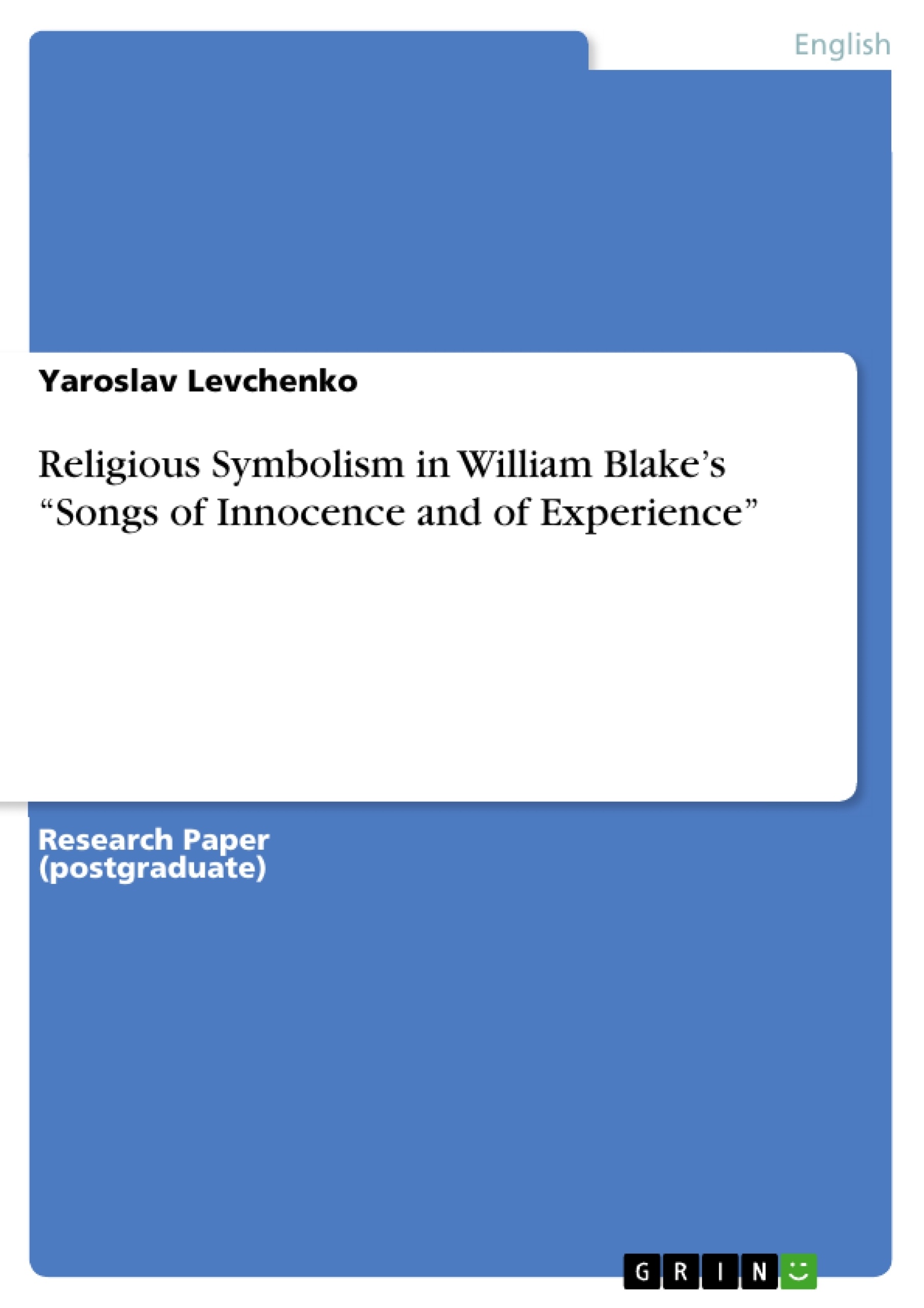The poetry as well as the whole art of William Blake is abundant with symbols and allegories that carry a strong charge – inspirational, charismatic and religious. It is the result of numerous factors including the peculiarity of Blake’s epoch, the city he was born, raised and lived in, the traditions of his family, and, of course, his personal features that are imprinted on every line of his writings and every engraving or picture he created. Moreover, he was the first poet after Edmund Spenser who produced his own mythological reality [1, 192], which proves the power of his imagination and creative potential. In his childhood and youth, William Blake was surrounded and impacted by objects, phenomena and people that were of pronounced symbolic character – his Dissenter origin, Bible study, visions and revelations that visited him throughout all his life, work in Westminster Abbey [1, 74] – and they could not but be incorporated in his masterpieces. If we add here interest in and adherence to Emmanuel Svedenborg and Jacob Boehme [2, xxi], the background of his symbolism may become more or less clear.
Inhaltsverzeichnis (Table of Contents)
- Religious Symbolism in William Blake's "Songs of Innocence and of Experience"
- Introduction
- Blake's Symbols: History and Interpretation
- Songs of Innocence
- Introduction
- The Lamb
- The Shepherd
- The Chimney Sweeper
- Holy Thursday
- Little Black Boy
- Songs of Experience
- Introduction
- Earth's Answer
- The Clod and the Pebble
- Holy Thursday
- The Chimney Sweeper
- Little Girl Lost
- Little Girl Found
Zielsetzung und Themenschwerpunkte (Objectives and Key Themes)
This article focuses on the religious symbolism found in William Blake's "Songs of Innocence and of Experience," aiming to identify the most frequent and significant symbols, trace their origins, and offer interpretations.
- The interplay between innocence and experience in the human soul
- The influence of religious traditions, including Christianity, Kabbalah, and Swedenborgianism, on Blake's symbolism
- The use of everyday imagery, such as chimney sweepers and the London cityscape, to convey religious and societal commentary
- The relationship between Blake's textual and visual art, particularly the illuminated manuscripts
- The exploration of themes of redemption, salvation, and the human condition within a wider societal and historical context
Zusammenfassung der Kapitel (Chapter Summaries)
- The article opens by introducing William Blake's prolific use of symbolism in his poetry and art, tracing the influences of his personal life, religious background, and historical context. The article then focuses on "Songs of Innocence and of Experience," highlighting the multidimensional nature of the religious symbols within the work.
- The chapter on "Songs of Innocence" explores various symbols like the Lamb, the Shepherd, and "Mercy Pity Peace & Love," tracing their origins and their connection to Christian themes. The chapter discusses the optimistic spirit of these poems and their focus on the positive aspects of human experience.
- The chapter on "Songs of Experience" explores symbols like Earth, Clod, Pebble, Tyger, Rose, and Poison Tree. This chapter contrasts the optimism of "Songs of Innocence" with the more pessimistic and complex themes explored in "Songs of Experience," highlighting the duality of the human soul and the contrast between innocence and experience.
Schlüsselwörter (Keywords)
William Blake, "Songs of Innocence and of Experience," religious symbolism, Christianity, Kabbalah, Swedenborgianism, innocence, experience, duality, human soul, redemption, salvation, societal commentary, visual art, illuminated manuscripts, London, historical context, literary analysis.
- Quote paper
- Yaroslav Levchenko (Author), 2009, Religious Symbolism in William Blake’s “Songs of Innocence and of Experience”, Munich, GRIN Verlag, https://www.grin.com/document/147517



